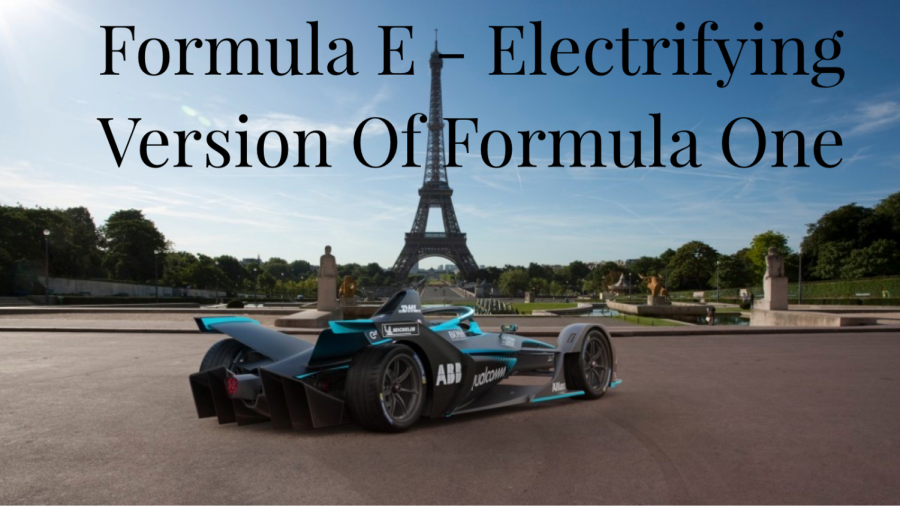The Growing Rise in Popularity for Formula E
Formula E reveals the new Gen 2 Electric vehicle.
May 17, 2021
Formula One is the highest level of motorsport competition across the entire world. With the blistering speeds, deafening cars and the strong smell of burning gasoline, it is no wonder the competition has people glued to their screens. However, Formula One’s counterpart, Formula E offers nearly the same experience as Formula One, with the exception of loud cars and gasoline required, providing an alternative that is less harmful to the environment.
Formula E was first conceptualized by Alejandro Agag and the Federation Internationale de L’Automobile President Jean Todt in 2011. These men wanted to replicate the excitement of Formula One in a more environmentally conscious way, which is how they came up with Formula E.
Agag and Todt wanted Formula E to be raced through the streets of famous cities such as Miami, London, Rome, Berlin and Buenos Aires, which allow for fast-paced and close-quarters racing minus the expense of air pollution. Formula E would come to fruition in 2014 with 11 races in 10 different host cities.
“It is pretty interesting and funny how Formula E was thought of, as it looks like it was a casual conversation that became reality,” sophomore Luis Tobar said.
While it may be believed the only difference between Formula One and Formula E is the use of electric vehicles, there are multiple new additions to make Formula E stand out. Each race now only lasts for 45 minutes rather than having a certain number of laps per race. After those 45 minutes, each driver must complete a final lap, in which scoring is calculated across the top 10 drivers who finish with the fastest times.
Formula E recently added a new feature called Attack Mode. Attack Mode is a feature in which a temporary power boost of 35 kilowatts of power would be given to drivers who drove through marked Activation Zones. However, sixty minutes before the beginning of a race, organizers will reveal how many times Attack Mode would be used and how long it would last. Attack Mode allows for a unique feature, that keeps each race exciting in a competitive way.
Another feature that has been introduced is Fanboost, which is one of the unique features differing from Formula One. Fanboost is a boost given to drivers voted for by fans, adding a mix from traditional set and stone rules most sports offer. The five competitors with the most votes are given a large boost of power during their competition. However, the boost lasts only five seconds, meaning it must be used wisely during the race’s critical moments.
Formula E cars also differ from Formula One in car manufacturing as they are significantly less powerful than Formula One cars. A Formula One car can average up to 700 kilowatts of power compared to Formula E’s 250 kilowatts. These manufacturers have managed to push the limit of what is possible in Formula One vehicles by designing faster cars that do not need as much maintenance throughout a competition.
Formula E is imagined to be the less popular championship compared to Formula One in the eyes of many avid racing fans, primarily because it is still such a novel idea. However, it is theorized that Formula E has the potential to grow as big as or bigger than Formula One, with the innovations of unique features and the smaller carbon footprint on the world.












